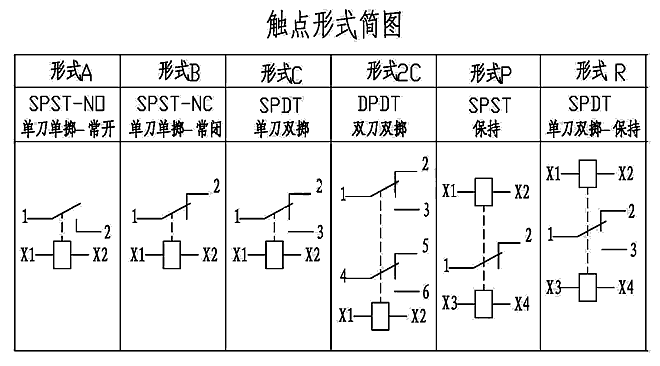HV Relays
HV Relays for high voltage applications, which is notablely different from general relays by using particular impervious ceramic technology to keep relays' contacts in sealed container that is separate from air and obtain high dielectric strength. The relays can be filled by different medium for different application. Two kinds of medium, vacuum and high pressure gas, were normally used in relays.
Performance of Vacuum
As very few gas molecule exists in vacuum, arc hardly occurs. Ideally, it is possible to obtain dielectric strengths of 10000V per 0.1 mm in vacuum. Because there is no air in vacuum, contacts is oxidation free. Thus, vacuum relays typically have low and stable contact resistance, which is ideally used in radio frequency (RF) condition.
Performance of High Pressure Gas
Pure high pressure gas allows relays to obtain advanced dielectric strengths and avoid oxidation. When relays are used for hot switching, gas can keep contacts from high temperature burning. These relays are ideal for high in-rush capacitive make and capacitive discharge loads found in ESD test equipment, cable test equipment and heart defibrillators. Gas-filled relays also provide low, stable leakage current in applications sensitive to current fluctuations - especially across open contact sets over long periods of time.
Typical Structure of HV Relays

|
Typical Structure of HV Relays is shown as below:
We can see, four basic parts are included in typical high voltage relays. They are:
-
Sealed arc slaking capsule, where contacts are located to obtain high voltage withstanding.
-
The armature that can move moveable contact.
-
The coil that can supply momentum.
-
Continuation for mounting and connecting.
Definition and Specifications for GLVAC High Voltage Relays
Contact Arrangement - GLVAC relays have the following contact arrangements:
-
single pole single throw (SPST)
-
single pole double throw (SPDT)
-
double pole double throw (DPDT)
Contact Form of the Code Name for Relay Model (see the figure)
|

Test Voltage - The voltage for test relays' dielectric strengths, normally showed by peak voltage (50 or 60 Hz), 1 minute duration.
Rated Operating Voltage - The maximum allowable AC rms voltage (50 or 60 Hz) which may be applied between open contacts or high voltage and housing, normally showed by peak voltage (50 or 60 Hz), high frequency voltage is shown for RF application.
Continuous Current - The maximum current that can be carried by the closed contacts of the relay for a sustained time period.
Contact Resistance - In vacuum relays, the resistance of closed contacts is measured as voltage drop across contacts carrying 0.25 amp.
Contact Capacitance - Contact capacitance is measured either between open contacts or between contacts and ground. Measurements are made per GJB360 (similar to MIL-STD-202), Method 305, at 1 kHz.
Insulation Resistance - The minimum allowable DC resistance between two test points, such as the relay contacts and the coil, or contacts and case at a specified voltage, usually 500 Vdc.
Coil Hi-Pot - The minimum voltage which the relay coil terminals will isolate when the relay is properly mounted.
Operate Time - The time interval between the coil energization (nominal coil voltage) and the closing of all normally open contacts. This includes time for the coil to build up its magnetic field and transfer time of the moveable contact, and bounce time after the initial contact make.
Bounce Time - The time interval between when the contact first makes, and when the last contact make occurs.
Mechanical Life - This is the number of operations which a relay can be expected to perform while no load or voltage applied to the power contacts.
Operating Temperature Range - The ambient temperature range over which a relay is specified to operate.
Pickup Voltage - The voltage at which relays shall pickup and change its original position.
Drop-out Voltage -The voltage at which all contacts return to their "normal" positions. (Applicable only to non-latching relays.)
Coil Resistance - The DC resistance, in ohms, of the coil at 25¡ãC.
|